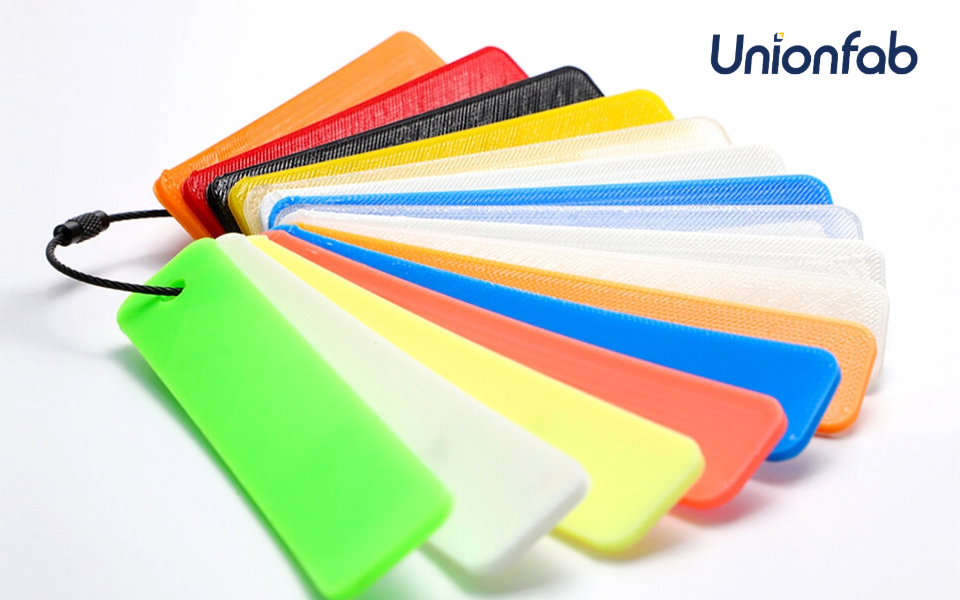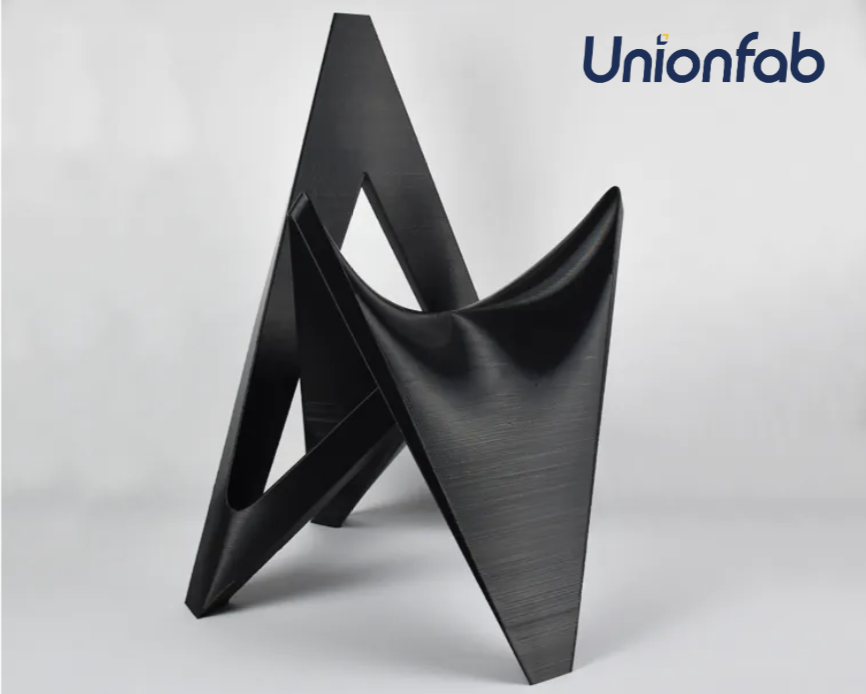PLA Bed Temperature Guide [+Pro Tips]
![PLA Bed Temperature Guide [+Pro Tips]](https://ufc-dtc-cms.oss-accelerate.aliyuncs.com/blog/20240626/214607_qp58uq0is.png)
Struggling with PLA prints lifting or warping? Discover how the right bed temperature can fix adhesion issues and boost print success. Follow our expert tips for flawless first layers every time.
Introduction
Have you ever struggled with PLA prints warping, not sticking to the bed, or failing on the first layer? These common issues are often caused by incorrect bed temperature settings.
In this guide, we’ll explore why bed temperature matters when printing with PLA filament, how to set it correctly, and what to do when things go wrong—so you can achieve stronger adhesion, smoother prints, and higher success rates every time.
Understanding PLA Filament
PLA (Polylactic Acid) is one of the most popular materials in FDM 3D printing, and for good reason. It’s easy to print, eco-friendly, and delivers great visual results with minimal effort. Whether you're a beginner or a seasoned user, understanding its key properties can help you make better decisions—and better prints.

Source: Unionfab
Characteristics and Composition of PLA Filament
Biodegradable: PLA (Polylactic Acid) is derived from renewable resources like corn starch or sugarcane, making it environmentally friendly.
Low melting point: Typically melts at around 180-220°C, making it easy to print.
Odorless: Produces little to no odor during printing, unlike other filaments such as ABS.
Low shrinkage: PLA exhibits minimal shrinkage during cooling, reducing the risk of warping and cracking.
Why Use PLA for 3D Printing?
Beginner-Friendly: Easy to print with and requires minimal setup or enclosure.
Low Warping: Its low shrinkage makes it ideal for printing large or flat objects.
Clean Finish: Offers sharp details and a smooth surface right off the print bed.
Versatile Applications: Suitable for visual models, educational prototypes, and light-duty functional parts.
Key Parameters for High-Quality PLA Printing
To get the best results when printing with PLA, a few core settings must be dialed in correctly. Here are the most important factors—and how to optimize them:
Recommended Settings
Print Temperature: 190–210°C is ideal for most PLA brands.
Too low: under-extrusion or layer separation
Too high: stringing or blobs
Bed Temperature: 50–60°C is recommended for better first-layer adhesion and reduced warping.
For smaller prints, no heated bed can sometimes work.
For large or flat prints, 55–60°C offers more stability.
Print Speed: 40–60 mm/s is a safe range.
Higher speeds (>70 mm/s) may reduce layer bonding quality unless carefully tuned.
Lower speeds improve detail and reduce vibration artifacts.
Why PLA Bed Temperature Matters

Source: Unionfab
The bed temperature is the heat applied to the print surface during printing. For PLA, getting this right is essential—it's what helps the first layer stick firmly to the bed and prevents warping or detachment mid-print.
Without proper bed heat, PLA can peel up at the edges or fail to adhere at all, especially for larger or flat models. Setting the right bed temperature ensures a strong foundation for the entire print.
Effects of Improper PLA Bed Temperature
If the bed temperature is too low, poor adhesion can cause prints to lift or shift, and the first layer may not stick properly, leading to failures.
Conversely, if the temperature is too high, PLA may become too soft, causing deformation or uneven layers, and filament expansion, resulting in print inaccuracies.
Importance of Bed Adhesion for Successful Prints
Proper bed adhesion is essential to prevent warping and ensure that the print stays in place throughout the process.
The first few layers set the foundation for the rest of the print, making bed temperature a critical factor in achieving successful prints.

Optimal Bed Temperature for PLA Printing
Recommended Bed Temperature Range for PLA Filament

Source: printables.com
A typical range for bed temperature is 50-70°C, with 60°C being a common starting point.
At 50°C, PLA adheres well, reducing the risk of lifting. Increasing towards 70°C further improves adhesion but can make the filament too soft, especially in warmer environments. Thus, 60°C is often recommended.
Here, we also list the optimal bed temperature based on different scenarios for your reference.
Condition | Recommended Bed Temp |
|---|---|
Default settings | 60°C |
Fast printing | 65°C |
Large models | 65–70°C |
Small parts | 50–55°C |
Cold environment | 65°C |
Factors Influencing Ideal Bed Temperature
PLA brand and type: Different brands or types may require slight adjustments. Some PLA blends may adhere better at slightly higher or lower temperatures.
Ambient conditions: Room temperature and humidity can affect the optimal bed temperature. Cooler environments may require a higher bed temperature to maintain adhesion.
Print settings: Variations in print speed and layer height might necessitate temperature tweaks. Faster print speeds or thicker layers may benefit from a higher bed temperature.
How to Find the Right PLA Bed Temperature
Fine-tuning your bed temperature can greatly improve print quality. Follow these steps to dial in the optimal setting for your setup:
Step-by-Step Guide
Step 1: Start at 60°C
Begin with the standard recommended temperature for PLA.
Step 2: Observe First Layer Adhesion
Watch how the first layer sticks. If it peels up or doesn’t bond evenly, a temperature adjustment may be needed.
Step 3: Adjust in 5°C Increments
Increase or decrease the bed temperature in small steps (e.g., from 60°C to 65°C) until you see consistent adhesion without warping.
Step 4: Use Temperature Towers for Fine Tuning
Print a bed temperature test tower to see how different settings affect surface quality and layer bonding.
Adjusting PLA Bed Temperature for Better Results
Bed temperature isn't a one-size-fits-all setting. Environmental factors, model size, and print speed all influence what temperature works best for strong adhesion and clean finishes. Here's how to fine-tune it.
Impact of Print Speed and Layer Height
Fast print speed can cool PLA too quickly, leading to poor adhesion.Recommended bed temperature: 65°C to maintain stickiness during high-speed prints.
Thicker layers retain more heat and require better bonding with the bed.Use 60–65°C to improve layer grip and reduce separation.
Large vs. Small Prints
Large models tend to warp more at the edges.Recommended bed temperature: 65–70°C to prevent corner lift.
Small prints have less surface area, so they bond more easily.Recommended bed temperature: 50–55°C to avoid overheating or bottom layer bulge.
Adjusting for Ambient Environment
Cold rooms or open-frame printers cool the bed faster. Set bed temperature to 65°C or use an enclosure to stabilize conditions.
Warm environments help maintain adhesion with lower settings. 55–60°C may be sufficient as higher ambient temperatures help maintain heat without additional heating.
Troubleshooting PLA Bed Temperature Issues
Even with correct settings, issues may arise. Here’s how to identify and fix them:
Common Problems
Warping: Edges lift off the bed due to low temperature.Raise bed temperature by 5°C increments.
Elephant's Foot: Bottom layers spread outward.Lower bed temperature by 5–10°C.
Layer Separation: Uneven bonding caused by unstable temperature.Ensure consistent temperature across the entire print surface.
How to Fix Adhesion Problems
Prepare the Surface: Clean the bed and use adhesives like glue stick or painter’s tape.
Level the Bed: A well-leveled bed improves first-layer contact.
Observe Early Layers: Stop the print early if first layers show signs of lifting or overheating.
Fine-Tuning Bed Temperature
Adjust in small steps (5°C) based on print results.
Use test prints or temperature towers for accurate tuning.
Reassess after switching materials, brands, or environmental conditions.
Conclusion
Mastering PLA bed temperature control is a critical aspect of achieving successful 3D prints.
By understanding the role of bed temperature, experimenting with optimal settings, and employing troubleshooting strategies, users can enhance print quality and reliability, ensuring successful outcomes with PLA filament on their 3D printers.
Unionfab: Your Partner for High-quality 3D Printing
Unionfab, China’s largest 3D printing company, offers high-quality, custom 3D printing solutions for rapid prototyping and on-demand production.
Bring your ideas to life with Unionfab's high-quality 3D printing solutions. Get a free quote today!
Connect with our team to explore tailored options — We're ready to listen and help you find the perfect solution.


